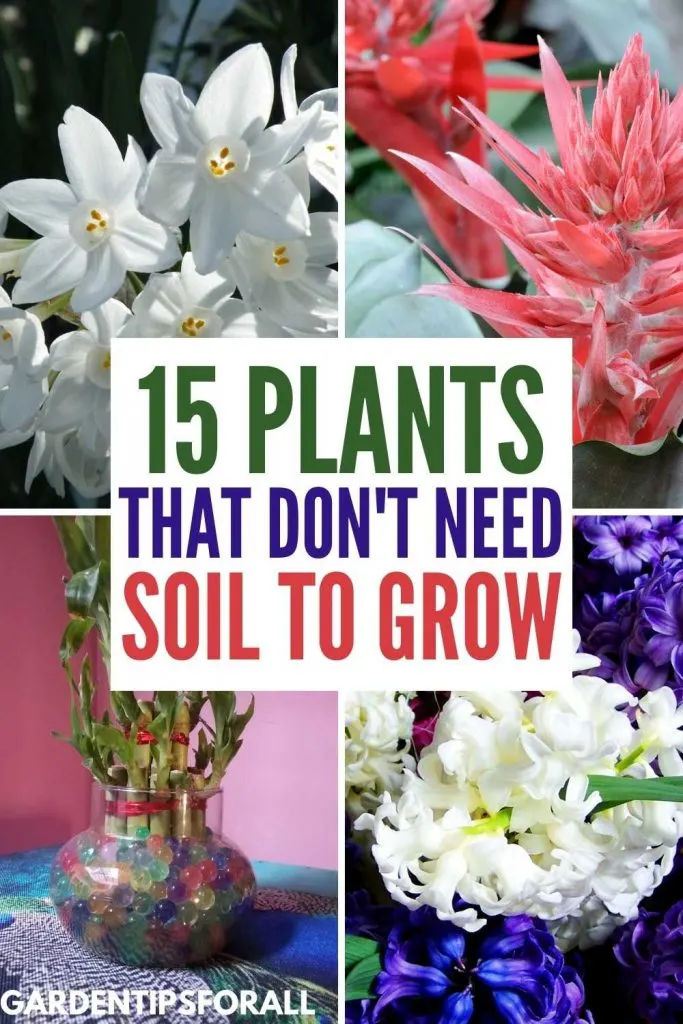Plants That Don’t Need Soil to Grow (And They are Low-Maintenance)
Do you hate dirt around your home?
Did you know that there are plants that grow without soil?
Maybe you love the beauty that houseplants add to your home but do not like the mess of handling the soil.
Well, we have some good news for you. If you’d love to keep your fingers clean (and your manicure intact), we have the best solution.
Why not try growing your plants hydroponically – a method used when growing plants without soil.
Here are 15 plants you can grow without soil. (Bonus: They’re great too if you don’t have enough space in your backyard).
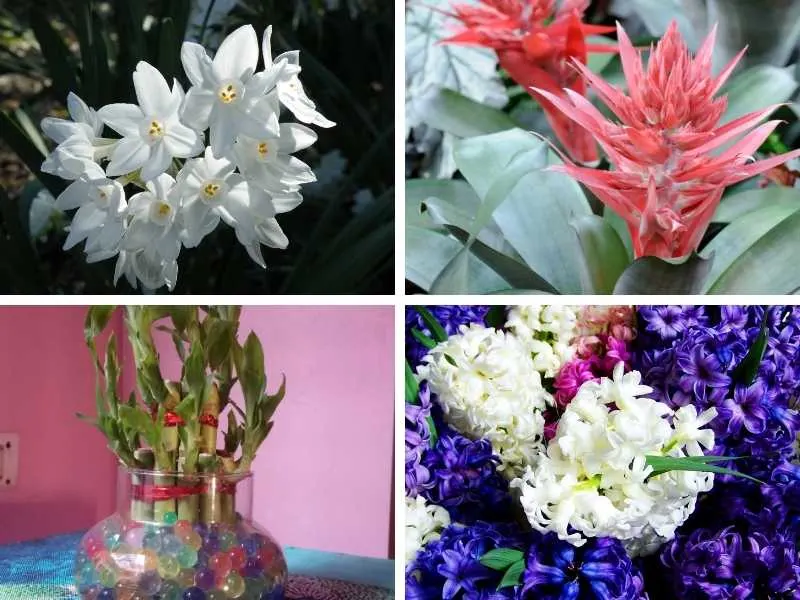
Related Articles:
- 8 Varieties of Spider Plants
- 8 Houseplants with Red Leaves
- Annual that Bloom All Summer Long
- Flowering Perennials Plants that Bloom All Summer Long
15 Plants that Grow Without Soil
Here are some options that will take your gardening passion to the next level:
#1. Paperwhite Narcissus
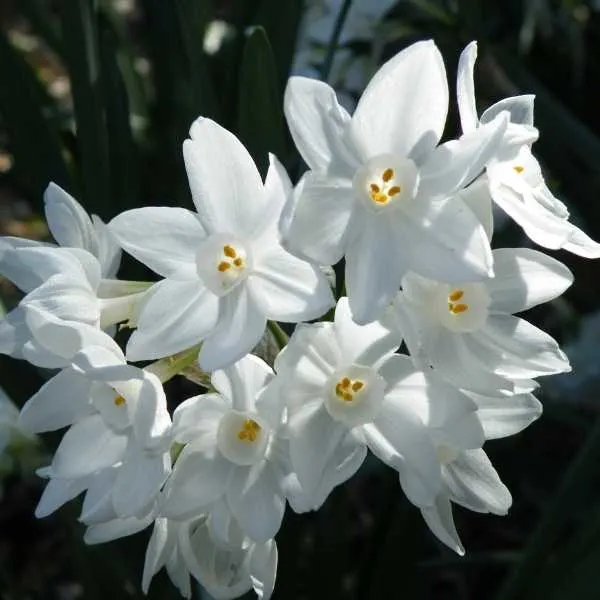
These fragrant plants are a variety of daffodils, and they grow in just water and some pebbles.
Additionally, they can be forced from bulbs when indoors during winter. Thanks to their pretty white and yellow blooms, the plant will light up your gray, cold months.
Just be warned – they have a strong smell and may not be suitable if you’re allergic to strong scents.
#2. Aechmea
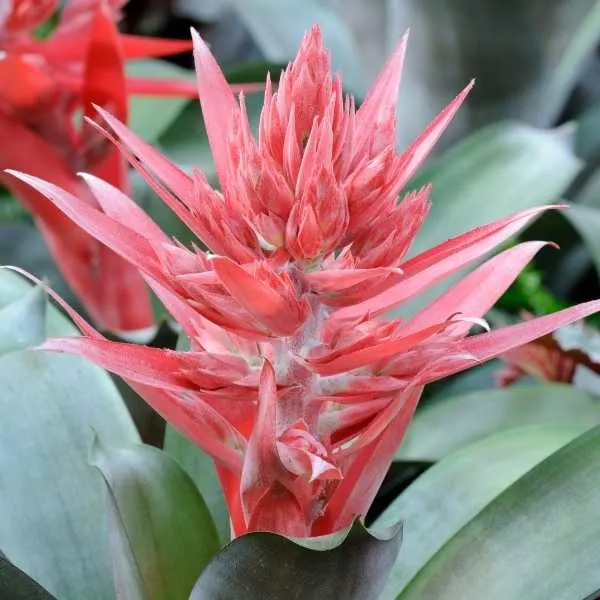
This plant is a nonparasitic grappler in the wild and the roots anchor to a host plant.
As a member of the Bromeliad tropical plants, vendors sell them in decorative pots in nurseries.
Aechmea is not susceptible to many pests and does well in shade and light. And the interesting part? The plant has a colorful appearance and is easy to take care of. Therefore, they’re on most occasions given as gifts.
#3. Lucky Bamboo

Despite the name, Lucky Bamboo (Dracaena Sanderiana) is not a Bamboo plant. Instead, this is a decorative plant suitable for the house and is best known for its indestructible nature. It is also one of the best plants for bathrooms without windows.
Most people prefer to grow the plant hydroponically despite their ability to thrive in soil.
All you need is at least half an inch deep glass of water and a gravel support system (or any other appropriate medium) to keep the plant in a straight position. Also, ensure that the roots stay covered in the water.
Here are more water growing plants.
#4. Philodendron
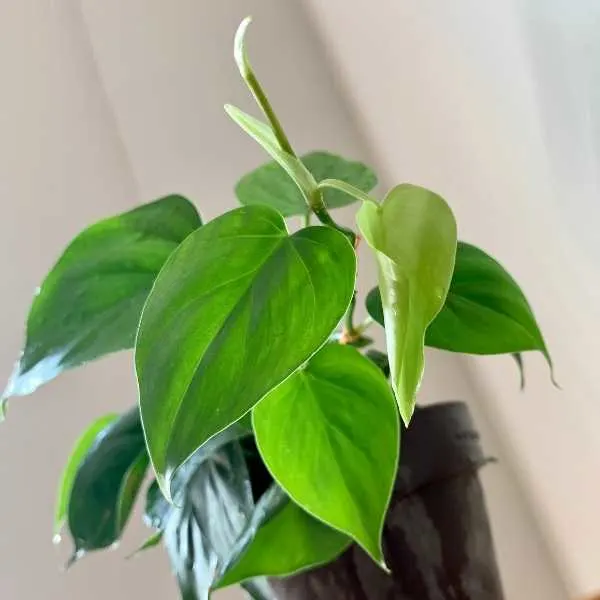
While gardeners often grow the plant in pots, it can still flourish without soil and can grow in just a jar of tap water. In addition, this adaptable houseplant is easily identifiable, courtesy of its trailing, lush, heart-shaped leaves.
To grow Philodendron in a jar of water, you’ll need to snip off 6 inches of an already existing plant. After that, remove the two lower sets of leaves and submerge them in water.
In 10 days, you’ll notice roots forming at the leaf nodes. At this point, your Philodendron will be good to go.
#5. Orchids
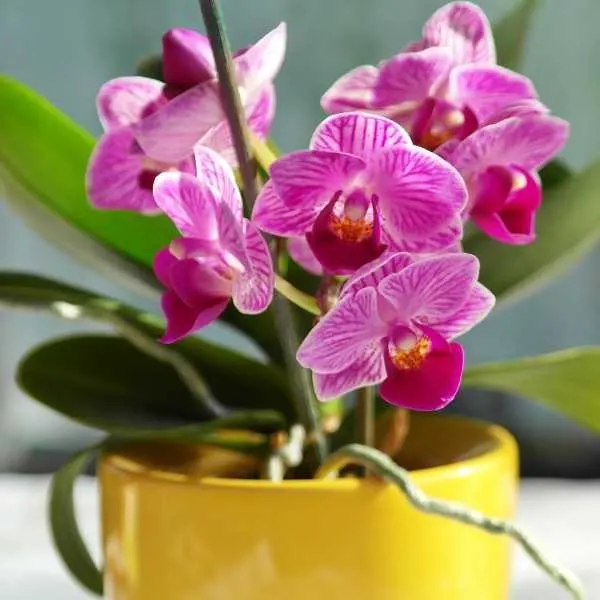
Well known for their spellbinding fragrance, orchids are a top choice for important celebrations such as weddings. And even better, they are great as houseplants.
In as much as most orchids grow on other plants (epiphytes) other than soil, they’re not parasitic. Plus, they have a squishy membrane covering their roots, which sucks water from the environment.
On most occasions, orchids fit best as houseplants. Additionally, they come in a planting medium such as stones or moss, but they thrive well when you plant them on lava rocks. Once the roots take hold, they can grow on a piece of bark.
#6. Aloe Vera
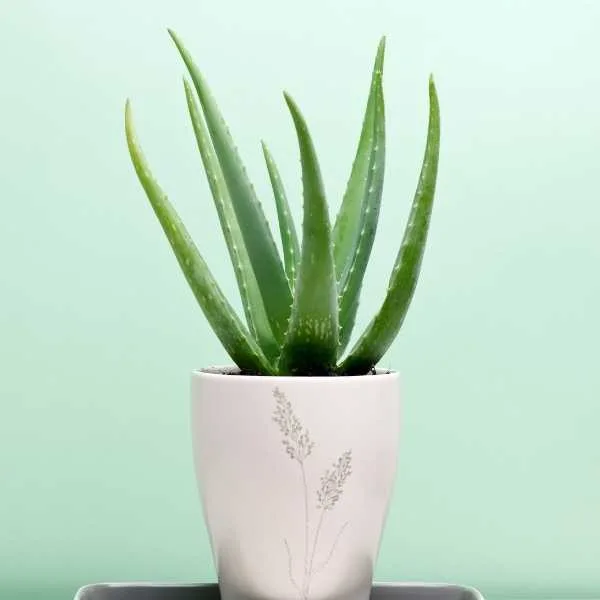
Are you surprised to learn that Aloe Vera can grow indoors without soil? This is true, and the good thing is that you can use it for medicinal purposes. It is also one of the most popular plants with spiky leaves.
Aloe Vera thrives when grown in full sunlight, in small, sand-like pebbles, and a partial shade.
Keep in mind that you should not overwater it.
#7. Spanish Moss

Tillandsia Usneoides or Spanish moss evokes the romance of southern climes and humid summer days. With its gray-green, drooping tendrils, this plant, on most occasions, grows on trees.
Furthermore, it absorbs nutrients and water from the environment, and with proper care, it thrives indoors.
To keep it in tip-top shape as a houseplant, you’ll need to fertilize it with a high-phosphorus liquid fertilizer every fortnight. To add to that, you’ll need to mist it twice every week.
Ensure you purchase your Spanish moss from a trusted supplier if you intend to grow it indoors. This is because if you get the plant from the wild, it will most likely have an infestation of small insects.
#8. Marimo Moss Balls
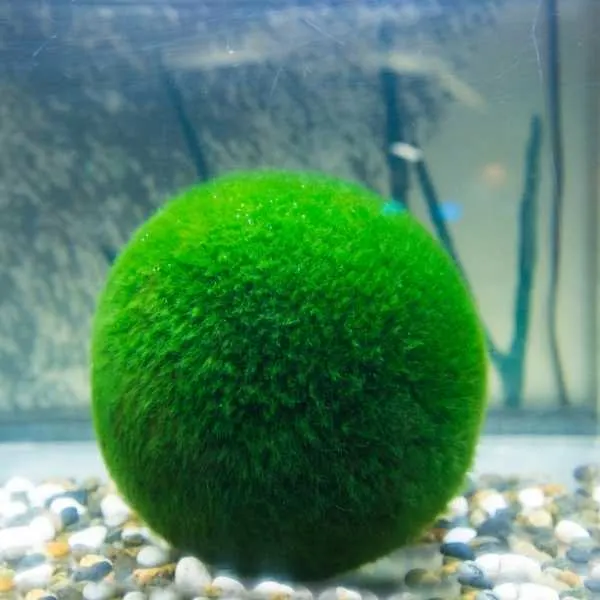
Also known as Cladophora balls, Marimo moss balls are spherical algae. They can live alone in a water jar or grow in a fish aquarium.
To keep a conducive growing environment, change the water every few weeks. Consequently, please keep them in low indirect light.
#9. Hyacinths
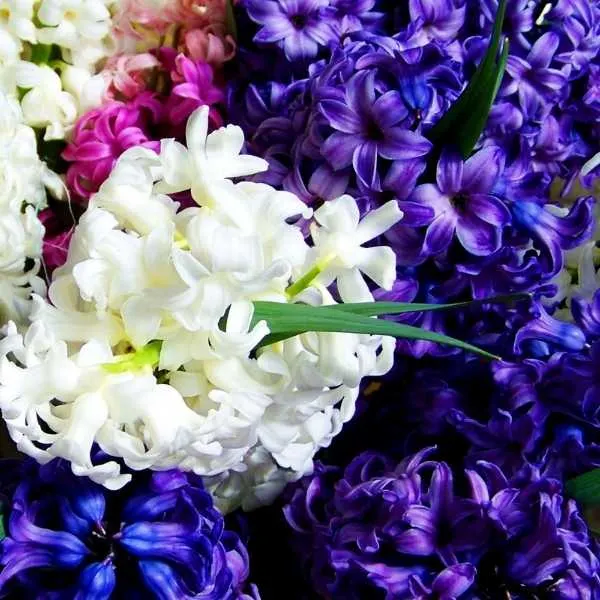
For proper growth of Hyacinths, you will need to keep them in the dark for up to 3 months. This gives room for their roots to grow.
At the end of 10 weeks, add pebbles in the pot and allow the plant to get sunlight to thrive well. Also, keep in mind that you should not overwater the plant.
#10. Air Plants (Tillandsias)
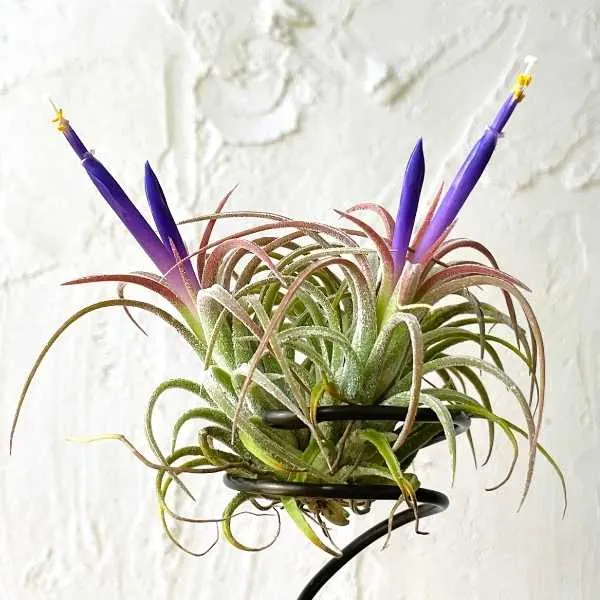
As the name suggests, these plants grow well in the air and make good houseplants. More than 650 varieties of the plant exist, which means a huge variety of colorful blooms and foliage.
The rosette formation, which the air plant leaves assume allows the plant to gather nutrients and water from the environment.
Lastly, to display Air plants as houseplants, you can mount them or place them in decorative dishes.
#11. Spider Plant
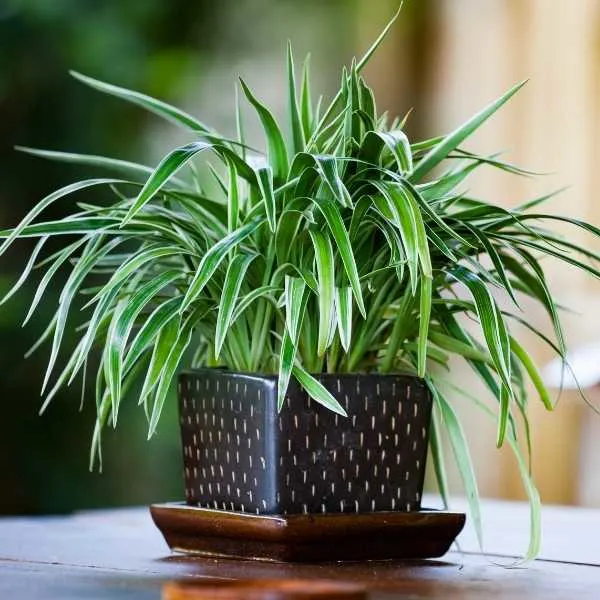
Thanks to its low-maintenance nature and adaptability, this natural purifier is an excellent choice for novice gardeners. Its advantage point is that it thrives well in both soil and water.
#12. Water Lilies
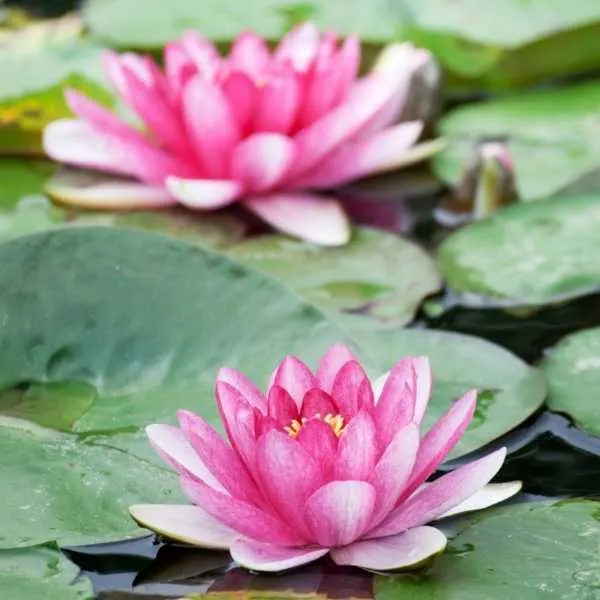
If you love aquatic plants, then you’ll love the floating nature of water lilies that symbolizes growth and peace.
You can grow them indoors in vases and jars filled with water.
#13. Swiss Cheese Plant
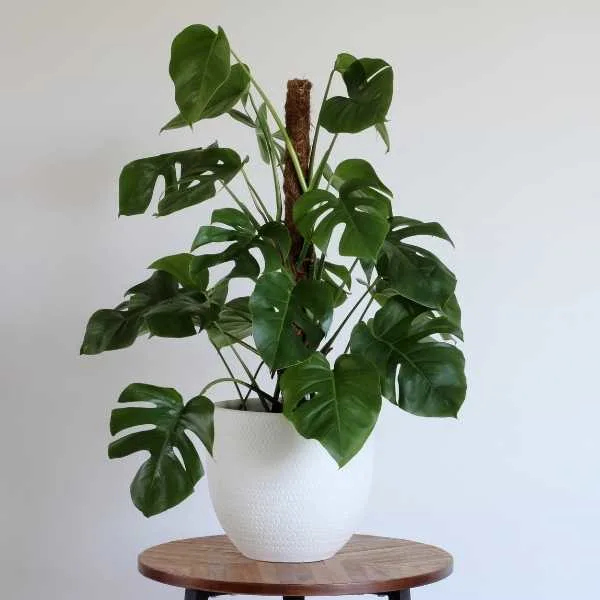
Add some tropical vibes to your house without indulging the mess of handling soil by growing the Swiss Cheese Plant in water. The excellent part is, you get to enjoy its serrated and lush foliage.
#14. Hosta
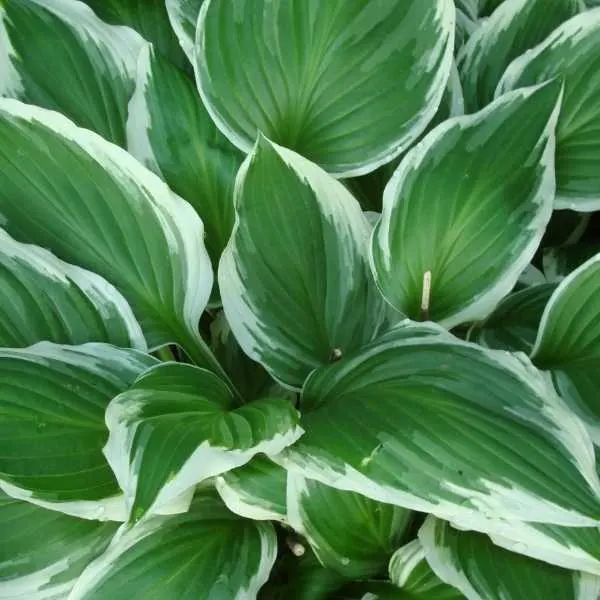
If you desire a stunning centerpiece, you can propagate Hostas by division and grow them in a vase or jar of water. Hostas make tough and ornamental houseplants and thrive well in the shade.
#15. Anthurium
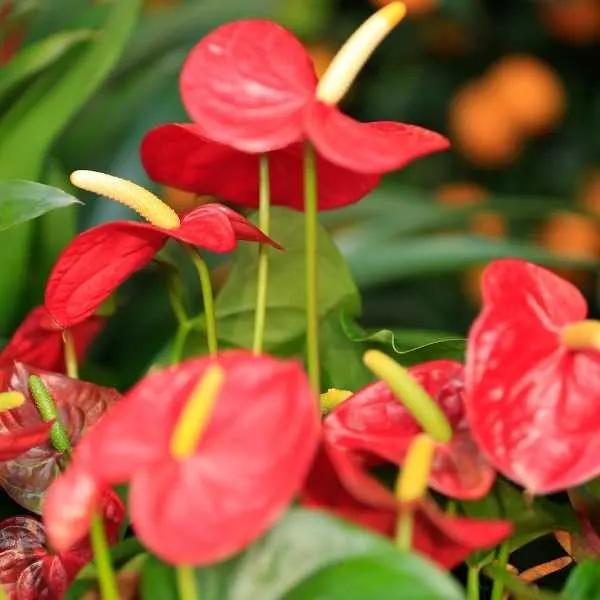
You will love the exotic, colorful, and glossy appeal that comes with this plant. Its immense beauty is easy to maintain and its best environment to grow in is high humidity and warm atmosphere.
How Can You Grow Plants Without Soil?
You can use the following options to grow plants without soil:
- Use Potting Mix: This is a blend of materials used to anchor the roots of a plant. Therefore, it provides the support needed for the plant to grow and supply the necessary nutrients.
- Hydroponics with the Use of a Growing Medium: You can grow the plants by supplying nutrients to the roots using water. On the other hand, a growing medium will provide support to the plant.
What are Plants Called When They Don’t Need Soil to Grow?
Hydroponic plants are plants that do not use soil to grow. Instead, these plants are grown in a water solution full of the desired nutrients.
Plants grown hydroponically will, in most cases, require less space, use less water, and yield more in comparison to conventional gardening.
The hydroponic system best fits the urbanites and apartment dwellers with insufficient outdoor gardening space.
How Do You Fertilize Hydroponic Plants?
The best way to fertilize hydroponic plants is by simply adding good quality, water-soluble fertilizer to the vase or jar every time you change the water. This is usually done every 4-6 weeks or sooner if you notice that some of the water has evaporated.
Use a weak solution that contains a quarter of the strength stated on the label.
If you notice that the foliage looks pale or the plants look puny, use a weak fertilizer solution to mist the leaves every week.
For the best results, use well water, rainwater, or spring water, because water supplied by your city management is devoid of natural nutrients and tends to be densely chlorinated.
Additionally, to ensure the overall health of your plants is top-notch, have your water tested.
More often than not, the water may contain significant amounts of sodium, magnesium, and calcium. In extreme cases, it may also have excessive amounts of manganese and boron, which affect the overall health of your plants.
Final Thoughts on Plants that Don’t Need Soil to Grow
There you have it – plants that don’t need soil to grow. These houseplants are not only pleasing to the eyes, but they offer fantastic health benefits. Some of them act as anti-radiation plants and help absorb harmful radiation from laptops and computers.
Get ready to enjoy the all-new experience of gardening without soil. Accordingly, keep in mind that indoor plants can be highly delicate. Therefore, you’ll need some fertilizers (spray-on fertilizers) to help keep your plants healthy and improve their growth.
Have you had an experience with hydroponic plants before? Let us know in the comment section!
